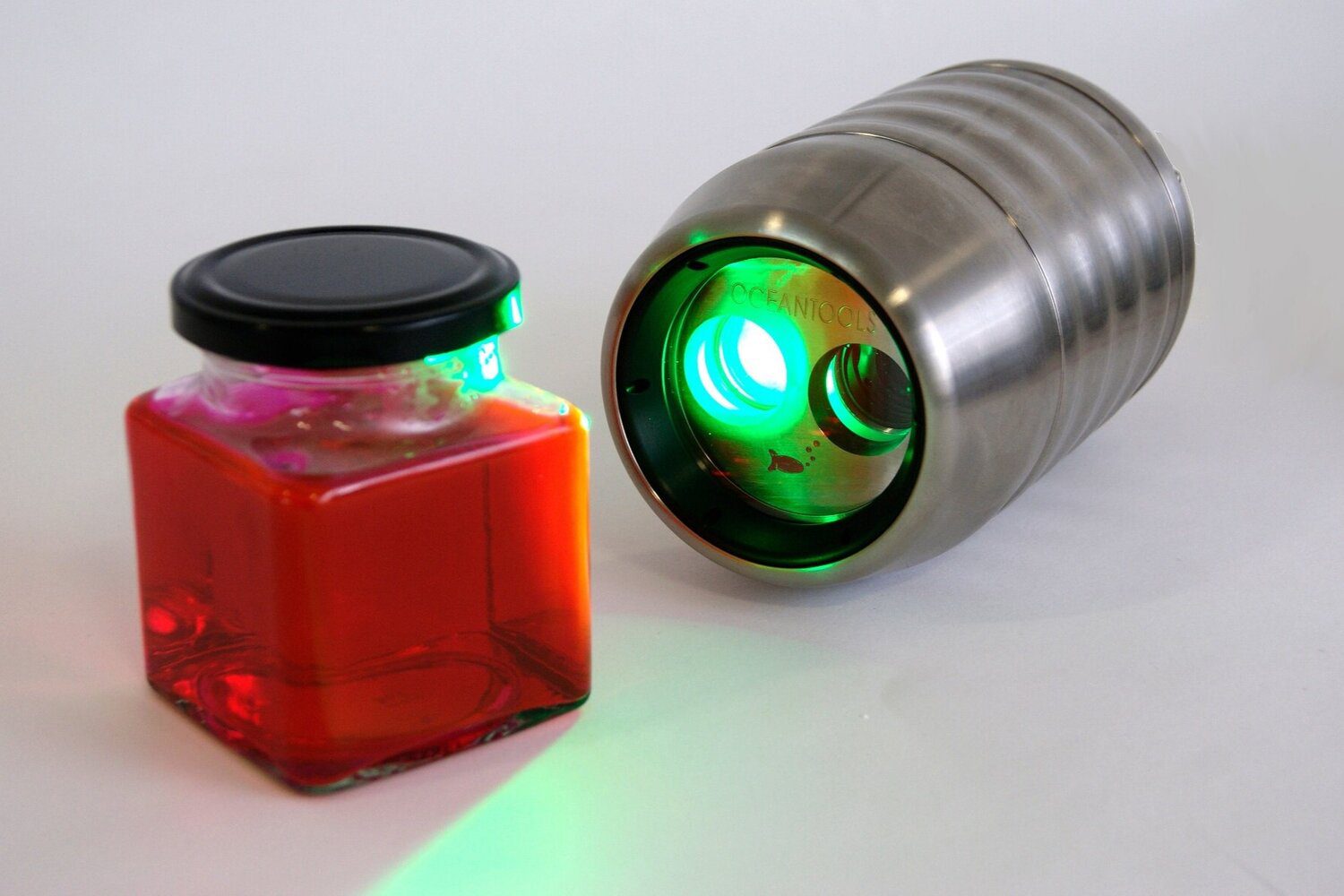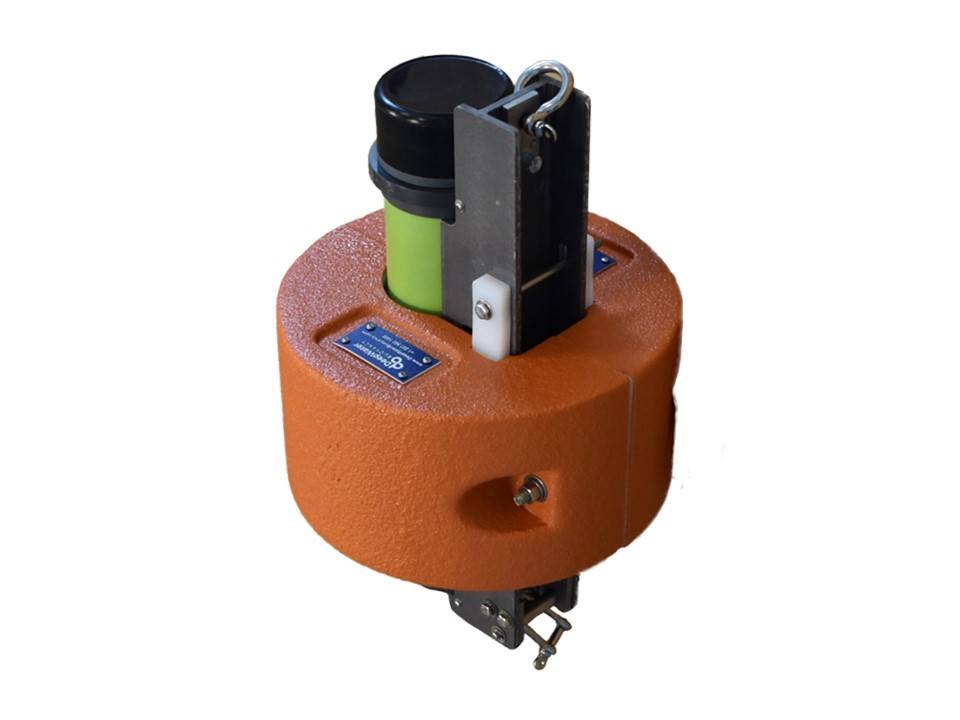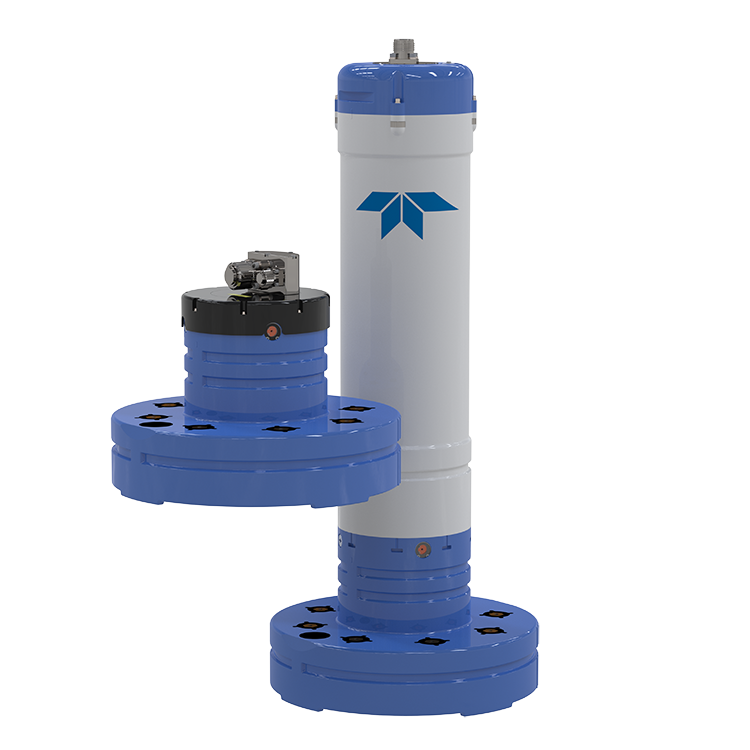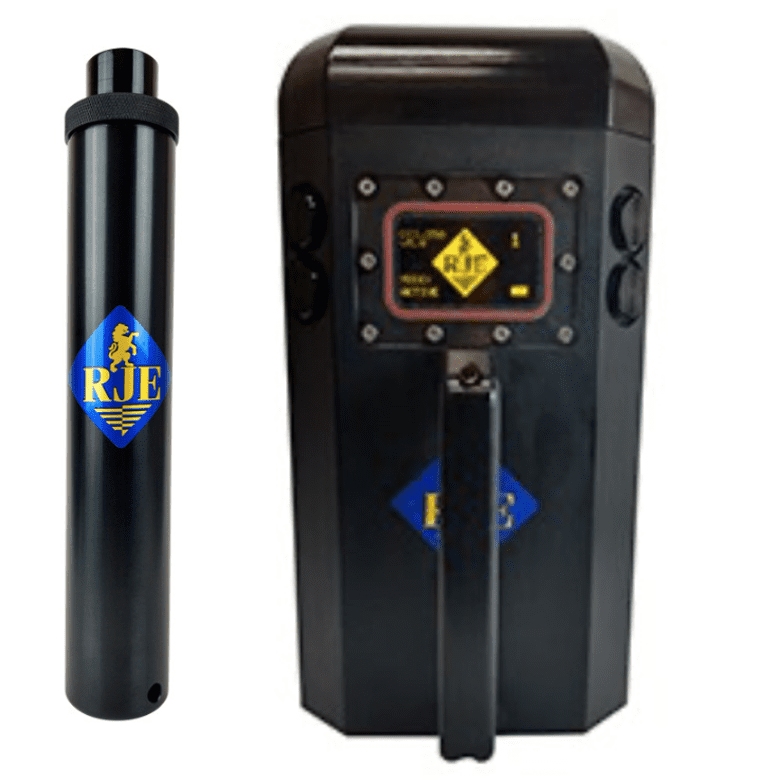BlueZone partners with over 50
world-leading original equipment
manufacturers and systems providers
OceanTools D7 & D10 DyeTectors®
Advanced subsea dye detection system
- Rhodamine, Fluorescein or Ultraviolet dye detection
- Focused beam and filtered high intensity LEDs
- Light amplification and photon detection technology
- 6000m standard depth rating or 1000m option
The D7 DyeTector is a state of the art subsea leak and dye detector. High-power LED light is focused through lenses and filters to create a concentrated beam that is tuned to a specific wavelength to cause maximum fluorescence of the dye. Detection electronics employ clever light amplification technology to amplify even the smallest amounts of fluorescence from the agitated dye molecules.
The powerful ROV mounted D7 DyeTector uses a new technology capable of detecting single photons of light, which enables it to detect down to single digit parts per billion of dye dissolved in water. This makes it ideal for detecting the very smallest of leaks or dye-dosed cement.
Subsea infrastructure
A DyeTector may be used to detect leaks from subsea infrastructures such as manifolds, wellheads or pipelines if a suitable dye has been added to the infrastructure fluids. Pipeline or flow line pressure testing can be monitored by the DyeTector if dye impregnated fluids are used.
Cement detection
A DyeTector may also be used during casing cementing operations to detect cement returns if a tracer dye is added to either the seawater spacer or to the cement itself. Unlike pH meters which rely upon the cement passing over them, a DyeTector can detect cement from a distance of several metres depending on the concentration of dye.
Detection dyes
Versions of the D7 DyeTector are designed to detect specific types of dye in addition to OceanTools C-Dye and C-Dye 370, including:
- Rhodamine dyes such as B275, RX9022, Pelagic 100 Pink
- Fluorescein dyes such as HW443, HW540P, Oceanic Yellow LTF
- Ultraviolet dyes such as RX9026E, Pelagic 100, Champion Cleardye, Castrol HT2
Key Features
Up to 25-hour mission duration
Speeds up to 4.2 knots
Increased module payload capacity
Search and recovery
Hydrography
Deep sea mineral exploration
Marine & Fisheries research
Product Enquiry
Related products
Deepwater Buoyancy Acoustic Release Buoyancy
DeepWater Buoyancy’s Acoustic Release Buoyancy Collars allow for long-term deployment of acoustic release instruments to depths as great as 6000 meters. Designs provide for single acoustic release systems or, for...
Read moreThe Pinnacle 45 is rated to a depth of 2000 m, and delivers a 1000 m current profiling range with a decreased size and weight, a game-changing swappable configuration, and...
Read moreEmergency Relocation Transponder for Diving Bells
Commercial diving companies operating in an area that requires their diving bell to meet offshore standard DNV-OS-E402, must have an emergency locating system that meets section 305 of that standard.
Read moreRelated Articles
Ahead of the Tide: BlueZone’s Landmark IndoPAC 2025 Showcase
Celebrating 25 Years of Sovereign Capability The Indo Pacific International Maritime Exposition stands as the region’s premier showcase for commercial maritime and naval defence innovation—bringing together leaders from defence,...
Read MorePartnering for Performance: BlueZone Supports Kraken Robotics in Advancing KATFISH Capability
BlueZone Group to become Kraken’s Australian Sales Representative, Enhancing Sovereign Support for Cutting-edge Synthetic Aperture Sonar Systems We are thrilled to announce BlueZone Group have signed an agreement...
Read MoreSeeByte and BlueZone Group Forge Strategic Alliance to Strengthen Australian Naval Capabilities
BlueZone Group is proud to announce our appointment as the official Australian representative for SeeByte, a UK-based leader in advanced maritime defence and uncrewed systems technology. This strategic partnership marks...
Read More



